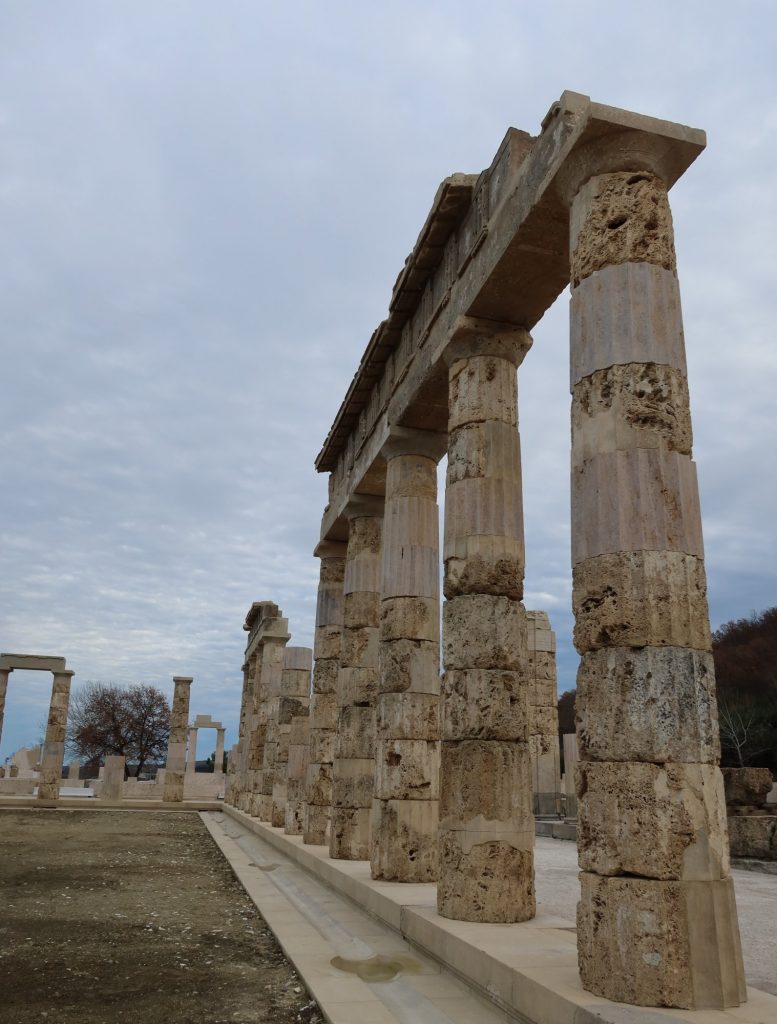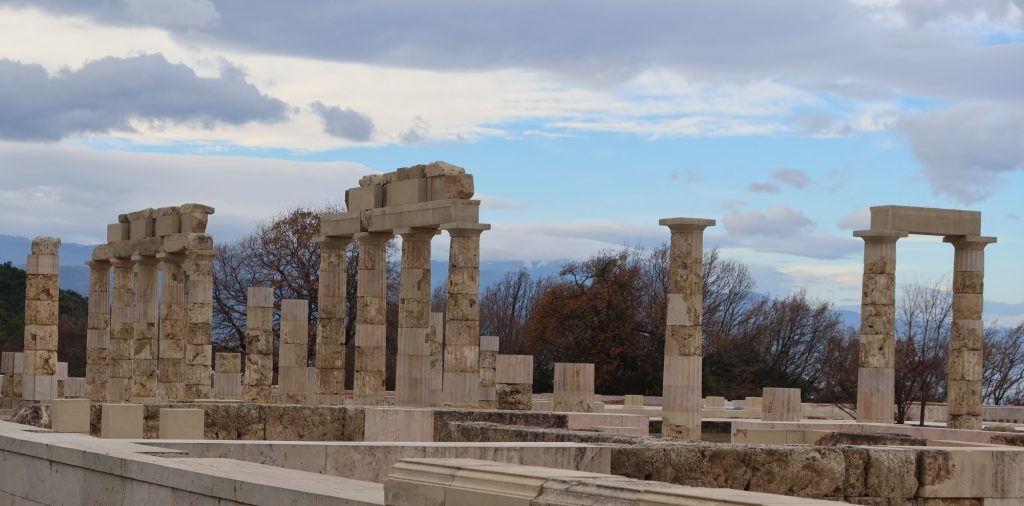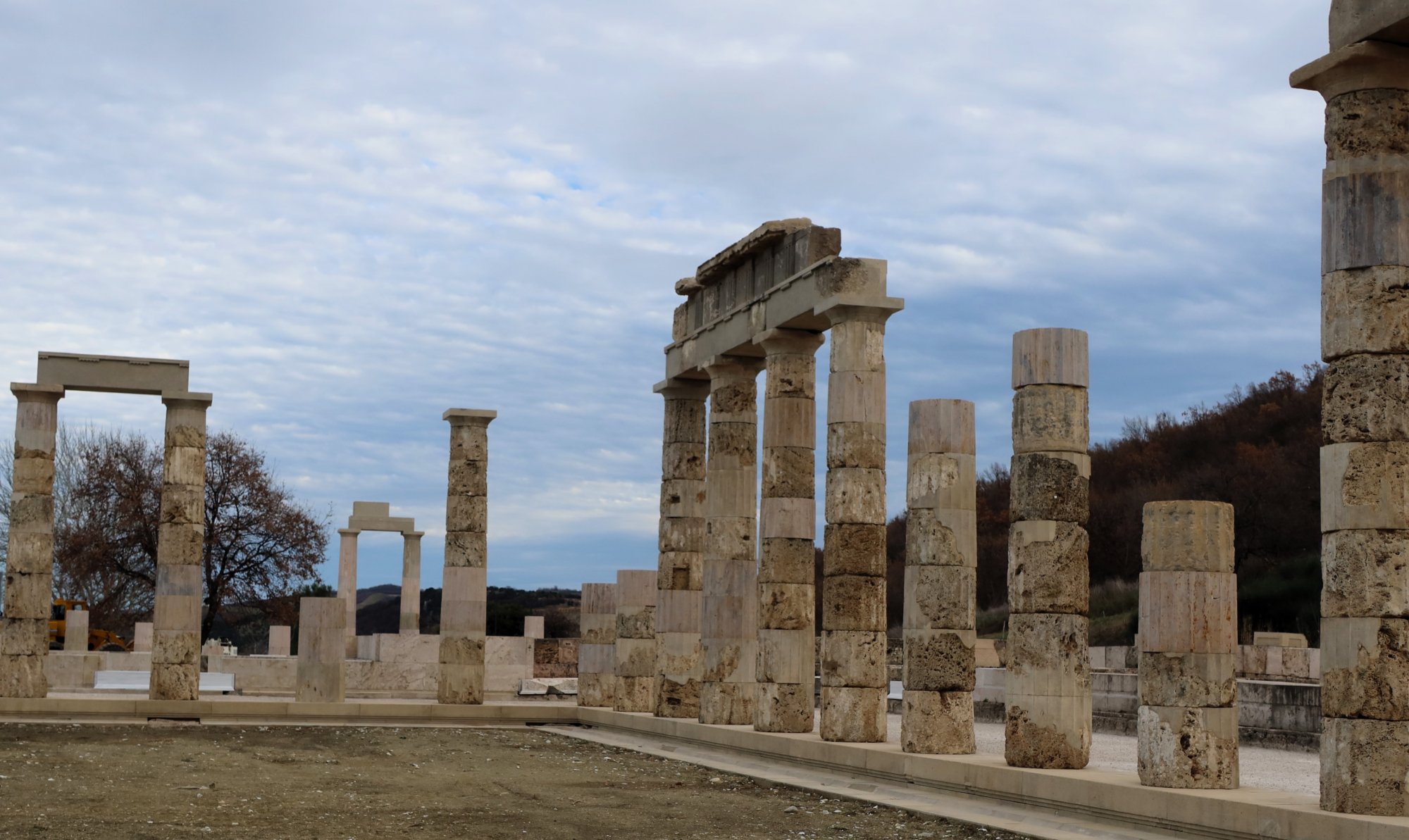Prime Minister Kyriakos Mitsotakis is scheduled to inaugurate the recently restored palace of Aigai in Macedonia, northern Greece on Friday, January 5, 2024, at 13:00. The PM will be guided at the site, the largest structure of classical Greece in the country, by the Honorary Curator of Antiquities, Angeliki Kottaridi.
The Largest Edifice of Classical Greece
At the heart of a vast construction program initiated by Philip II (359-336 BC) to modernize and elevate Aigai, the royal metropolis of the Macedonians, stands the palace, known as the “basileion” of Aigai, covering an area of approximately 15,000 square meters.
The austere, yet functional edifice, is distinguished by the opulence of materials, inventive design, and flawless execution. It showcases unexpected technological achievements and geometric purity, forming a unique ensemble of unparalleled tranquillity, elegance, and harmony, where all elements are subordinated to the charm of proportion.

The Project Expanded Across the Monument’s Entire Area (15,000 sq. m.)
Featuring a monumental propylaeum reminiscent of a sanctuary, impressive two-story colonnades, a grand colonnade surrounding spaces for gatherings, a tholos identified as sacred to Patron Heracles, a library/archive, and a smaller western colonnade serving auxiliary purposes (e.g., wrestling arena), the “basileion” of Aigai housed all structures necessary for the exercise of multi-layered public authority.
The project extended to the entirety of the monument’s area (15,000 sq. m.) and its surrounding space, totaling approximately 25,000 sq. m.
With 16 Doric columns on each side, the grand colonnade of Aigai, embodying the concept of a square, is unprecedented. Spanning 4,000 sq. m., it could accommodate at least 8,000 people and serve as a gathering place for the Macedonians. The citizen gathering place transforms into a courtyard, with the word “courtyard” becoming synonymous with the concept of kingship.

The Architectural Genius Through the Ages
The architect ingeniously amalgamated traditional elements with radical innovations. Construction began in the mid-4th century BCE and was completed in 336 BCE, coinciding with the culmination of Philip II’s omnipotence celebration, during which he was assassinated upon entering the neighboring theater. Alexander the Great (Alexandros III) was proclaimed king of the Macedonians in the grand colonnade, initiating the path that would change the world.
The palace suffered destruction in the mid-2nd century BCE, following the final collapse of the kingdom by the Romans under Quintus Caecilius Metellus in 148 BCE.
Excavations, initiated in 1865 and continued in the 20th century, revealed remnants of the devastation, leading to the meticulous conservation, reinforcement, restoration, and reconstruction of the monument. Executed by the competent Ephorate of Antiquities of Imathia, the project, self-funded, spanned from 2007 to 2023, financed through successive European programs with a total budget of €20,300,000.



